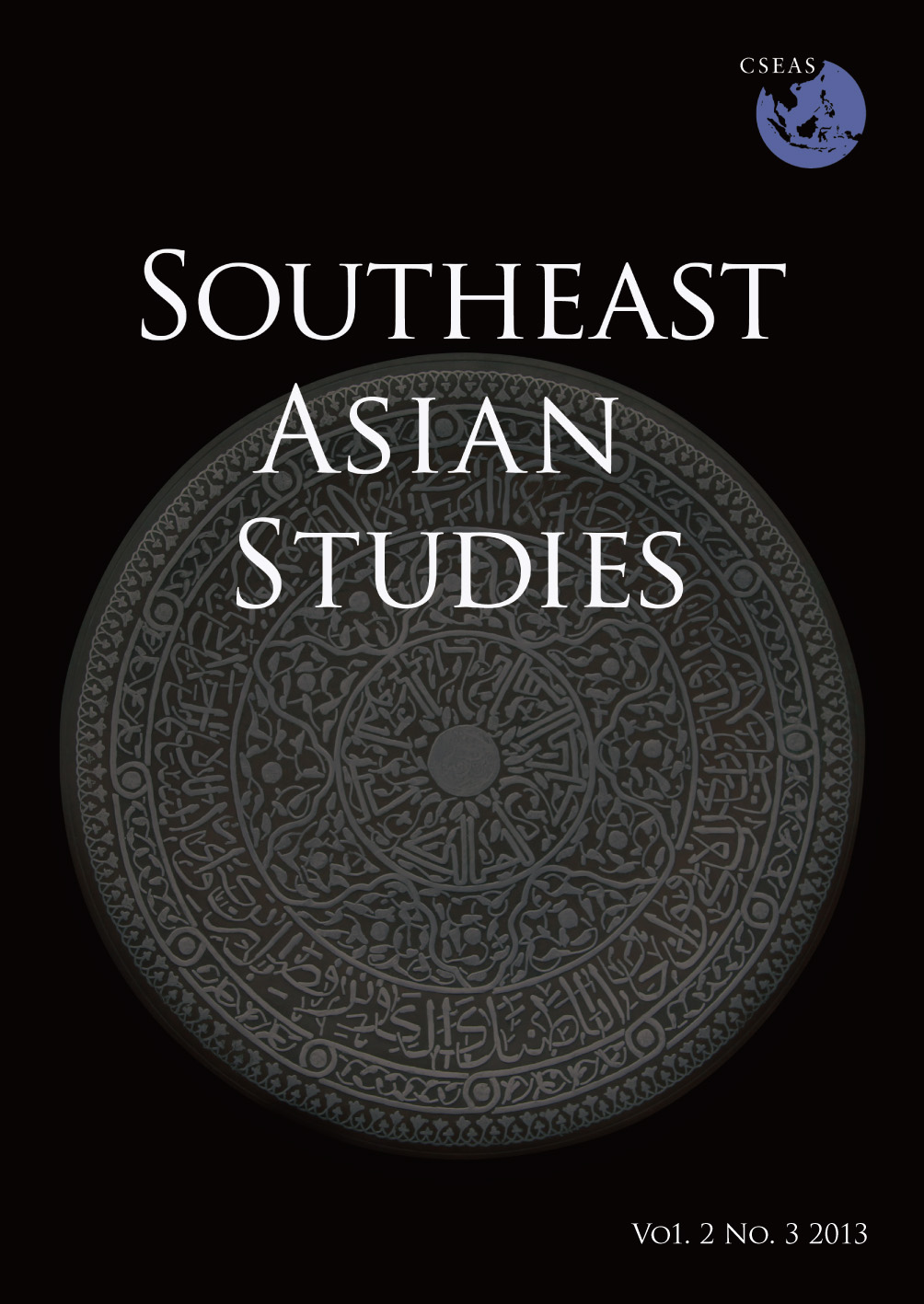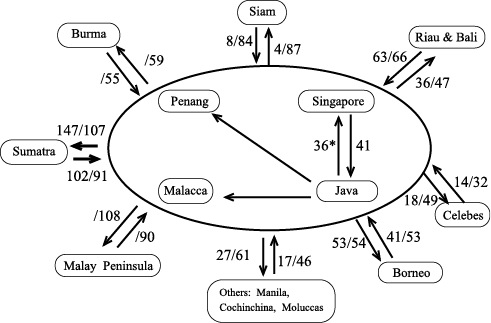BOOK REVIEWS

Strong Soldiers, Failed Revolution: The State and Military in Burma, 1962–88
Yoshihiro Nakanishi
Singapore and Kyoto: NUS Press in association with Kyoto University Press, 2013, xxi+358 p.
Millions of words have been written about politics in Myanmar since the collapse of General Ne Win’s socialist revolution in 1988. However, works of genuine scholarship on the structure and underlying nature of Myanmar politics are as rare as snow in summer. Strong Soldiers, Failed Revolution is a welcome exception. Yoshihiro Nakanishi has made a significant addition to the meagre literature on the politics of modern Myanmar. My criticisms which follow, and there are several, in no one way detract from the fundamental contribution that this book makes in confirming how the political and administrative core structure of the post-1962 state in Myanmar, the army, was constructed and survived unto today. The stability, and continuity, of army rule in Myanmar since 1962 is, as Dr. Nakanishi makes clear, unusual and requires explanation. The central chapters of this volume provide an explanation of that stability and grounds it in detailed, empirical, and highly original research.
Chapters four through seven are the most important parts of the argument of Strong Soldiers, Failed Revolution, but the earlier and later chapters are also important contributions to our understanding of modern Burmese politics, although at places one can take issue with some of the points the author advances. Chapter one provides an overview of the volume and takes the reader through some of the relevant, and sometimes irrelevant, largely American, political science literature on comparative politics. If words mean anything, some of this is just jargon, such as “dictatorship democracies,” which some seem to favor. However, this chapter is important in setting the scene, particularly as the author does not make the mistake of many commentators on Myanmar politics and dismiss General Ne Win’s commitment to his socialist revolution. He was willing to deny his army resources for the sake of that revolution, and that sacrifice became part of its strength and the reason the army could continue to rule after the revolution had failed.
The second chapter provides the historical background to the Ne Win revolution. The author’s grasp of this material is rather weaker than of the more recent history, though perhaps some of the problems stem from the fact that the language he is using has been translated at least three times—from English into Japanese and back into English again. For example, colonial Burma never had a governor-general (p. 33). It was the British Government of Burma Act of 1935 which separated Burma from India in 1937, not 1936 (also p. 33), though later this author gives the dates accurately (p. 38). These are petty criticisms, though it is important to note that the so-called British “divide and rule policy” was an accusation made by Burmese nationalists, and perhaps a consequence of British rule. Whether it was intentional is highly debatable. Aung San did not go to London to negotiate independence with the colonial governor, Sir Hubert Rance, but with the British Prime Minister, Clement Attlee (p. 50), the “Panrong agreement” is presumably the “Panglong agreement,” though whether it is a document proposing federalism is debateable (also p. 50), and the Mujahids wanted to merge northern Arakan with East Pakistan, not form a separate Islamic state (p. 51). However, as no one will read this book for the sake of this background chapter, this criticism is by-the-by.
Chapter three on how the ideology of the Burma Socialist Programme Party came to be written is informative, though the author’s lack of reference to a third ideological tract, the Specific Characteristics, which was the last published as a corrective to earlier texts, is surprising, given how thorough is his research. The author’s attempt to draw a distinction between ideology and philosophy, at least in terms of political practice, I find unconvincing. That the author of the Party’s ideology, U Chit Hlaing, could use his theory to justify two different regimes should surprise no one who studies politics. Chit Hlaing was following the orders of his military employers. Whether Ne Win had a clear idea of what kind of ideology he required to justify his rule to himself and others is something that Dr. Nakanishi doubts, but that he gave Chit Hlaing instructions he confirms. In an age of ideology, had Chit Hlaing’s ideas not been available, they, or something like them, would have had to be invented because that was the zeitgeist of what was then called Third World politics, in this case in a Theravada Buddhist context.
Chapters four through seven provide the reason Strong Soldiers, Failed Revolution will be cited by other Myanmar scholars as well as comparative political scientists for years to come. Chapter four explains why the single party that Ne Win invented was never able to gain autonomy from its military founders. Finding jobs for the officer corps as they retired from the army was not only a personal kindness but a political strategy and prerequisite for remaining in power. Chapter five, entitled “Destroy the Bureaucracy! Transformation of the Civilian Bureaucracy in the Name of the Revolution,” provides a detailed account of how the bureaucracy became captured by retired military personnel. Whether Ne Win realized what he was doing when he created the first deputy ministers in 1969 is unclear, but now we know the consequences. However, I believe that the author underestimates the weaknesses in the bureaucracy that already existed when the army seized power in 1962. It was then just a shadow of what had existed in 1942, the last effective year of British rule. When many of the remaining senior bureaucrats resigned on the cusp of independence, the then ruling civilian party was able to fill many posts with their own appointees, regardless of their qualifications. This, in part, explains why the army was able to so dramatically improve the administration of the country during the first, brief period of its rule, in 1958–60.
Chapter six, entitled “‘Winner-Take-All’: An Analysis of Burma’s Political Elite,” begins with a misleading and unhelpful allusion to something called “Burma’s political culture.” What that may be remains in doubt, other than that some analysts, when at a loss to explain political decisions, gloss what they do not know in terms of an unknowable “political culture.” Happily, Dr. Nakanishi quickly abandons that discussion and returns to the close empirical analysis of the members of the legislative and other bodies in the government of Burma during the 1970s and 1980s. He once more demonstrates, despite Ne Win’s apparent intentions, that army and ex-army personnel dominated the government just as they did the party. This leads logically into the final substantive chapter, seven. Here his command of his data is impressive, though his lack of knowledge of pre-1962 history lets him down. Amongst Myanmar’s ministers of defense, he omits Bo Let Ya and U Win (p. 243), but this minor error detracts not at all from the empirical validity of the author’s conclusions.
After a very cogent and helpful restatement of the key points in the thesis of the Strong Soldiers, Failed Revolution, Dr. Nakanishi does what everyone writing a book on Myanmar these days seems to feel impelled to do and speculates about what comes next. Much of this is quite helpful and informative, particularly suggesting how the legacy of the Ne Win-BSPP period allowed the post-1988 military regime not only to maintain itself in power, but to expand and develop the capacity to make the transition to a civilianized regime after 2011. Indeed, this could be expanded upon with advantage for one of the most misunderstood aspects of modern Myanmar politics is the nature and purposes of the military regime between 1988 and 2010.
Unfortunately, he falls into what I see as an error in being drawn into the discourse of political critics of the army, rather than remaining in the discourse of political analysis. He repeats the previously heard allegation made by critics of the post-1988 military regime that the army then perceived the general public as a threat and “also exhibited a sense of paternalism” (p. 294). That the army arrogated to itself a claim to be practicing “national” politics in a selfless manner is undoubtedly the case, but there is nothing new in that claim. That was a claim made from the 1940s onwards. Moreover, a reading of the documents of the 1990s indicates the army leadership knew exactly who their political opponents were, and they were not some generalized “citizenry.” Indeed, the army used the near same language as in the socialist period: the people’s army, together with the people, against the enemies of the state, whether leftists or rights. As in the introduction to the book, so also at the conclusion, Nakanishi perhaps becomes victim to the same philosophical fault as U Chit Hlaing. That democracy is the reigning ideology of today, rather than socialism, is obvious, but in terms of their approaches to the subject of comparative politics, there is little difference. Democracy, like socialism, is not an analytical category, it is a vague ideological preference.
Robert H. Taylor
Institute of South East Asian Studies (Singapore)
DOI: doi.org/10.20495/seas.2.3_599



